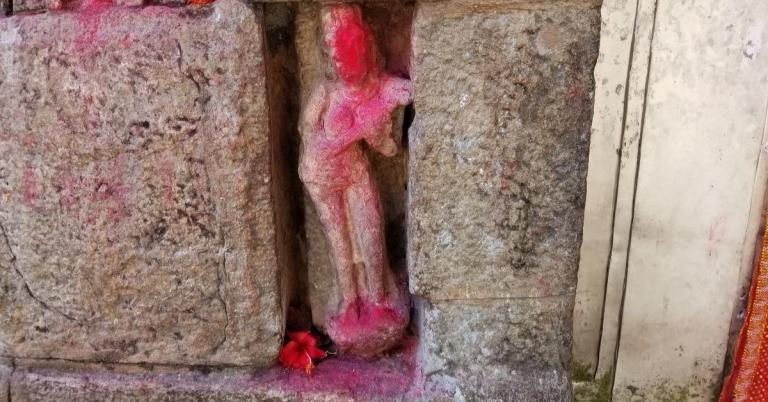One: The Trip is Only Part of the Journey
I did a lot of reading and talking to people who had travelled to India before I left. While I was in country I spent every night researching what I was seeing. When I came back I had a lot to assimilate. I’m doing this by writing about it, because I’m a writer, but I’m also doing it by meditating and talking to my colleagues, because I am a practitioner. I expect I will be integrating what I learned for the rest of my life.
Two: Video Doesn’t Carry the Energy of Place
I hate flying. More of us need to do less of it because the carbon footprint is so high. One argument against travel is that the internet has films of almost every place you want to go. This is true, but the video is not the experience. Stepping onto land that carries a particular energy changes us in ways neither physical nor esoteric science can yet articulate.
The energy of place is also carried in the people who live there. This is true of everyone you meet – the indigenous people, the born-and-bred twentieth-generation resident, the transplant, the migrant, the expat. Interacting with the people is part of immersion. You might be able to set up a video call and talk to people in Guwahati, but it’s another whole ball game to walk down the streets of Fancy Market and be the only white people as far as the eye can see.
The metaphysical energy of the temples is world-renowned and undeniable. It’s almost like going to another planet. The only way to experience that is to show up in person.
Three: Choose your Destinations Wisely
When you say you want to go to India, where exactly do you want to go? Travel web sites catering to Westerners assume that the tourist wishes to see sites and have exotic experiences. So you end up on the Delhi-Agra-Jaipur Golden Triangle tour. Sure, every trip to the subcontinent has a spiritual aspect, but it’s not the primary focus of those tours. We had the tourist experience in Varanasi of being swarmed by people who wanted our money and it was deeply unpleasant. When we got off the beaten track where white folk seldom go the only reaction we got was people wanting pictures with us, which our guides found annoying and we didn’t mind.
If your trip is a pilgrimage, finding the right guide is essential. We were lucky enough to connect with a travel guide who customizes tours and has Tantric contacts in the country. As an esotericist I connected strongly with Kolkata. As a Tantric I had astonishing experiences in West Bengal and Assam. As a Pagan I visited five Shakti peeths (Goddess temples) and so many others I lost count.
There are other places I’d like to experience. If I had had more time I would have fit in a trip to Odissa to see the Yogini temples. We really regretted leaving out Devipuram, the Andhar Pradesh temple which offers courses in Sri Vidya practice. As a Thelemite it would be interesting to follow in Crowley’s footsteps and visit Madurai. I did visit Kolkata (and managed to avoid shooting anyone in a dark alley).
Four: East and West are Racist Constructs
The same analysis which applies to skin color racism applies to East-vs-West racism. Race is not a scientific concept, it is a political one. This is also true of the idea that there is an “East” and a “West”. This racism does not depend on skin color but on character. Carl Jung and invented a theory of incompatible psychological temperaments that played well to colonialist audiences. Once India and Europe are polarized it is possible to assign values: East is metaphysical, West is psychological. East is introverted, West is extroverted. Of course West is civilized and developed, East must be offered the benefits of civilization.
A century on, the “primitive” and “intuitive” and “metaphysical” Indian people have established the world’s largest secular democracy. The tech world is filled with brilliantly intellectual engineers from India. Despite Jung’s best attempts to discourage “Westerners” from studying “Eastern” traditions, they have become a major source of spiritual practice for millions. Indian esotericists in Kolkata study esoteric texts written in English as well as texts in Hindi and Sanskrit. So much of our esoteric thought comes from India anyway that it’s odd we continue to cling to the illusion that our esotericism is somehow distinct.
Five: A Little Respect Goes a Long Way
My guides were astonished that I took off my shoes at the temple door without arguing about it. That doesn’t speak well to their previous white visitors. Here’s the way I figure it: when we are not in our native land, it’s not our home. We are visitors and obliged to be on our best behavior. If we’re asked to do something, or not do it, we should comply. It means not going somewhere that we are asked not to go. The story about Crowley pitching a fit until he got admitted into a temple is not amusing, it’s one of the more cringe-worthy moments in his life story.
Our guides respected us for participating as they did, kneeling and chanting and making offerings. It was physically difficult for us at our age, and they said that we gave our bodies to the experience.
Six: The name for Goddess is Mother
Everywhere we went she is Ma. Kali, Lakshmi, Durga, Kamakhya, all are Mother. Academic studies of Paganism approach deities in a functional way: Demeter is the goddess of the earth, Aphrodite is the goddess of love. In India Lakshmi is earth, Kamakhya is love, but all are reflected in each other, and all are Ma. In India I felt as a lived reality that Nuit, too, is our mother, and we are all her children.




